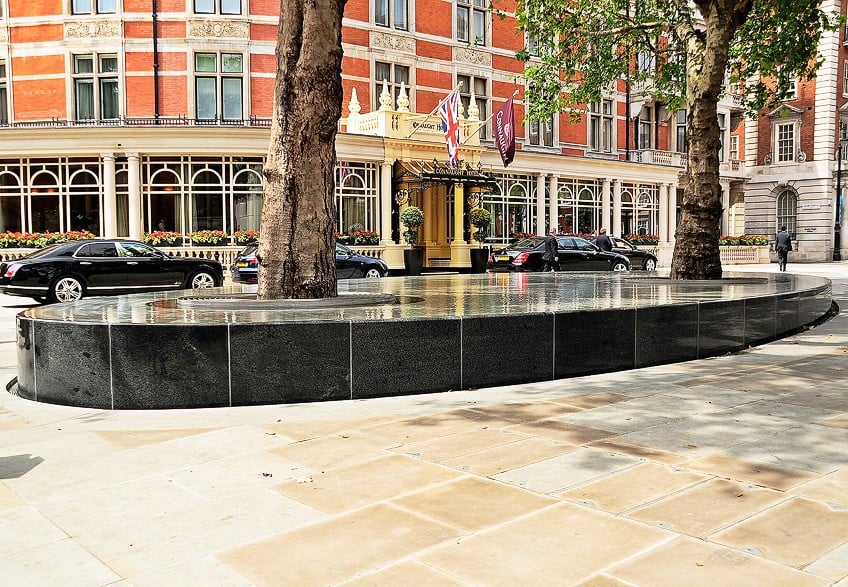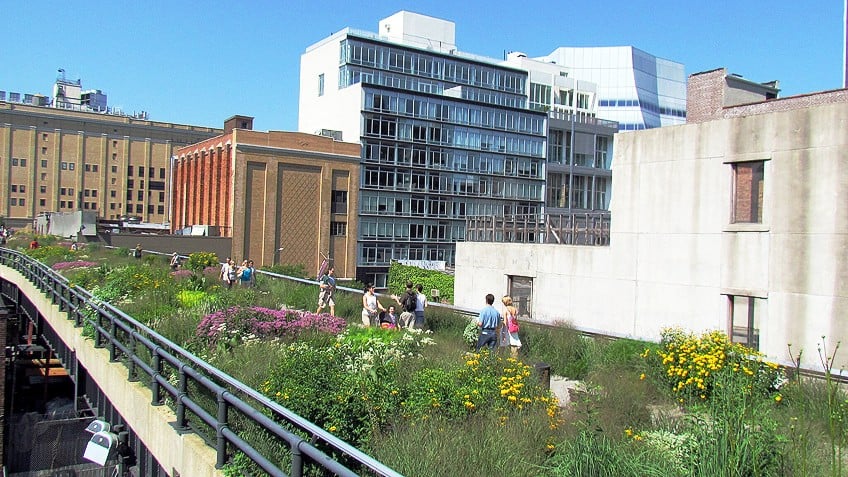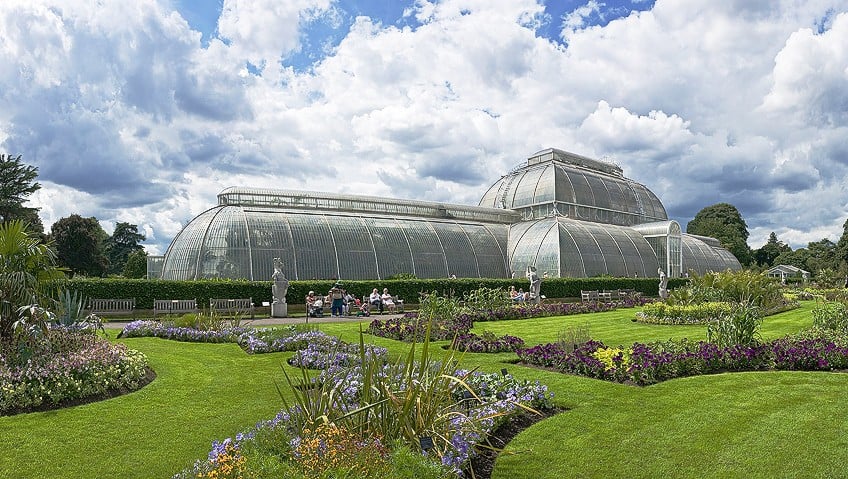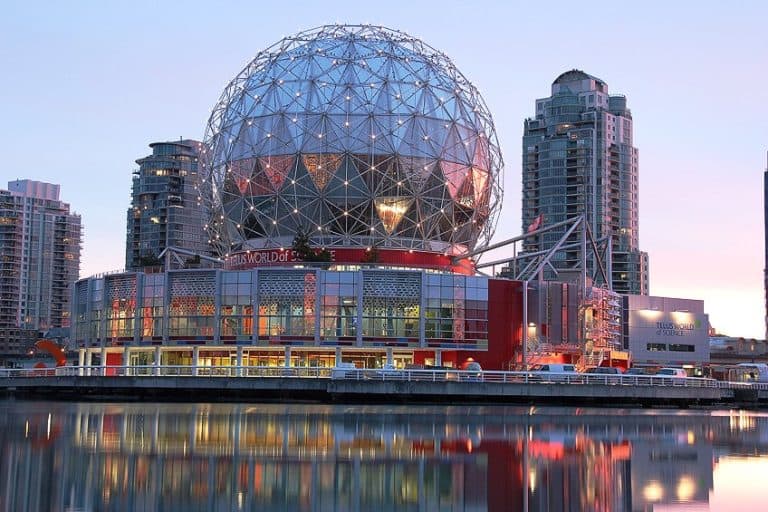What Is Landscape Architecture? – The Art of Outdoor Design
What is landscape architecture? That is what we will discuss today. In this article, we will examine the history of landscape architecture, some of the most common elements of these kinds of spaces, a number of different types of landscape and garden architecture, and some of the most famous examples of landscape architecture projects. Let’s have a look at landscape architecture and see what we can learn along the way!
Table of Contents
What Is Landscape Architecture?
Landscape architecture is, quite simply, the design and construction of outdoor spaces. This can include things like garden architecture, but it can also include the design and development of green zones in cities, public parks, hiking trails, campuses, and plazas. We often associate landscape architecture with far larger designs such as these, but gardens are also a form of landscape that could, theoretically, incorporate a landscape architect. However, most residential gardens are likely designed and maintained by the occupants rather than an actual landscape architect.
So, let’s have a look at landscape architecture and attempt to answer the question posited above: “What is landscape architecture?”
A Brief History of Landscape Architecture
What is landscape architecture and when did it originate? This is a rather interesting area of inquiry as landscape architecture, in general, entails the design of landscapes as diverse as gardens, parks, and scenic routes. In the earliest days of the design and implementation of garden spaces, said garden spaces may not have been for the aesthetic reasons that we typically associate with landscape architecture today.
The earliest gardens would have been subsistence farming arrangements that originated in the Neolithic period.
This was a period of human history in which we transitioned from a hunter-gatherer society into an agricultural one. We started to cultivate crops and engage in pastoralism, or the keeping, breeding, and farming of non-human animals. This was one of the most significant periods of time in the history of the human race as we finally started to transition from a nomadic lifestyle to a settlement one. Gardens and agriculture in general require settlement. One cannot easily farm the land when one is constantly moving from place to place, and that is definitely the case with landscape architecture. It could not have started before we started to lay down permanent roots, but this also means that we do not know when this actually started.

The issue with ancient human history is that writing systems are relatively recent in terms of the human animal, and so we did not have the means to record what we did, and that means that today, we cannot know these things for certain. What we do know is that there were ancient examples of garden architecture in places such as Egypt and Mesopotamia. These areas exhibit some of the oldest examples of human civilization, and so the origins of landscape architecture are about as old as human settlement. There were also instances of landscape design architecture that could be found in places such as ancient Greece, Rome, China, and Japan. The history of the garden is truly ancient.
However, the idea of an actual “landscape architect” is far more recent.
In terms of education, the earliest designers of landscapes and gardens would have been those who learned through an informal education. They would have learned how to do so from their parents and then passed it on to their own kids. This started to change in the 18th century in Europe when some of the first professionally educated landscape architects started to be hired by the wealthy. These wealthy figures, such as royals and aristocrats, wanted their massive palaces, mansions, and manors to be stunning works of standard architecture while being surrounded by landscape architecture that would contribute to the overall feeling of luxuriousness. These figures were inspired by many of the gardens and parks that had been developed during eras such as the Renaissance, Enlightenment, and the Romantic period.

The Romantics, in particular, can be seen as a major influence on the development of the garden. The Romantics often oriented themselves around a disdain for urbanization and industrialization, and during this period of time, cities were becoming more and more filled with factories, brick buildings, and an utter lack of green. The juxtaposition between Industrial Revolution cities and the countryside was stark, and the idea of green zones in European cities would only rise to prominence in late periods. During this period of time though, it was generally only the wealthy who could afford the luxury of a non-functional garden. While farms may have included a lot of greenery, they were not necessarily oriented around aesthetics, even if they were inadvertently aesthetic. So, some of these early examples of landscape architecture were gardens with water features, paved paths, and aesthetically pleasing plants, such as flowers.
The use of gardens would continue to develop through and into the 20th century with the advent of suburban living and household gardens are now often considered to be a staple of suburban house design.
However, in the latter half of the 20th century, and into the 21st century, the desire for landscape architecture to be more environmentally friendly would become more prominent. The addition of green zones in cities, with parks and other green areas, became far more common, and these areas were seen as important for the public good because of their use as sites for public health and community participation. Some of the most famous of these include massive landscaped zones, such as Central Park in New York Cities.
Over the decades, landscape architecture has changed considerably. It may have started as something only associated with the wealthy and pure aesthetics, but it has since shifted to be more site-specific, such as by making use of local flora, and it has become far more geared towards public use. That isn’t to say that private landscape architecture is not a common occurrence in the present day, because it certainly is, but some of the most prominent examples are wholly public sites in the contemporary era.
Elements of Landscape Architecture
There are a number of different elements to keep in mind when implementing landscape design architecture, and some of those elements will be discussed below. However, it should be noted that this is not a comprehensive discussion, but rather an overview of some of the most important elements. Some of those important elements involve the actual form of the landscaped space itself.
A landscape architect needs to understand the kind of plants and structures that will be used within a space to best understand the ways in which that particular space can be used and implemented.
Furthermore, it becomes important to understand the scale and proportion of the project. A landscaped residential garden in a regular size home will not allow for the kind of scale that could be found in a public park, and the needs of a smaller garden such as that would be significantly different from anything on a larger and more ambitious scale. Other important elements of landscape architecture include the color of the various materials and plants that are being used, and this becomes especially important when it comes to very colorful plants. Colorful plants also tend to have a certain aroma to them, and the use of smell can make for an effective landscaped space, as the smell of flowers can produce a certain calming sensation in visitors.

Alongside the visual and scent-oriented aspects of landscape architecture, there is also an auditory aspect. The sound of flowing water, as used in many examples of landscape architecture, or the use of non-human animals can greatly contribute to a space and the kind of effect that it has on those who occupy it. It comes important to understand human psychology to a degree when examining and designing outdoor spaces. What makes someone enjoy an outdoor space, what makes someone dislike an outdoor space, and so on?
It is integral to the job of the landscape architect that the spaces that are designed are desirable to those who would occupy them, and the senses should be taken into consideration when planning said spaces.
Different Types of Landscape Architecture
There are a number of different types of landscape architecture that can be used and adopted, and we are going to look at a few of those different types. All of these different types of landscape architecture are important in their own sense.
Site Planning
This may be considered to be a fairly basic example of landscape architecture, but whenever planning out a site for construction, it can be termed a form of landscape architecture. Even when a site is not going to be used for the purpose of what we usually see as “landscape architecture”, such as being turned into a park, it does still entail elements for which a landscape architect is trained. This can include aspects such as understanding drainage of a site, how to grade the soil, and how to best implement a structure atop said site.

Urban Design
This is the design of spaces within urban environments. This means the kind of green zones that have become more prominent in cities, such as the use of gardens along roadways or public squares that are complimented with the use of landscaped designs. This becomes important in the contemporary era because cities would otherwise become concrete zones with no real greenery in sight.
This is the way in which many cities became during the Industrial Revolution, but in the present day, we tend to prefer that our cities are more aesthetically pleasing to look at.
Land Development
This is a type of landscape architecture that is somewhat similar to site planning. However, land development entails the investigation, understanding, and planning of zoning districts that will be used for development. This could mean transforming the site into suburban or commercial districts.

Parks and Recreation
This is perhaps where landscape architecture is considered to be most famous. Any kind of public park is a site for recreation purposes within an urban environment. This is different from something like urban planning, because, unlike urban planning, parks are not generally constructed alongside roads, but rather have their own dedicated space. These areas, which often include gardens, playgrounds, and other recreational activities, allow landscape architects to design far larger spaces than those that could be constructed in smaller, more individualized spaces
An example of this is suburban residential gardens.
Ecological and Environmental Planning
This form of landscape architecture involves the use of existing natural spaces that can be modified without changing too much about the general site. This could mean a forested area that has never been developed being turned into a public and protected area within a city. Minimal design is needed to transform it into a public site, but it becomes important for a landscape architect engaged in this kind of work to preserve the natural landscape around which the public site has been created.

Heritage Conservation
This is a form of landscape architecture that involves the preservation of already existing sites. This could mean the maintenance of public parks or botanical gardens that have been in operation for decades (or even centuries). This kind of landscape architecture requires an understanding of preservation and conservation without damaging existing structures.
Furthermore, it ensures that the original vision is maintained as best as possible while also incorporating more contemporary methods into the general design of the sites in question.
Iconic Landscape Architecture Projects
There are many immensely famous examples of landscape architecture in our world, but we are going to examine only a handful of them today. These three major landscape architecture projects are some of the largest and most iconic that presently exist in our world. So, let’s have a look at them.
The Royal Botanic Gardens (Around 1759) in Kew
| Landscape Architect | William Chambers (1723 – 1796) |
| Date Constructed | Around 1759 |
| Function | Botanical garden |
| Materials Used | Glass |
| Location | Kew, United Kingdom |

The Royal Botanic Gardens in the United Kingdom is one of the most famous instances of landscape architecture in the world. This particular site was originally founded by Princess Augusta in the 18th century, and it has remained, to this day, as one of the most diverse botanical gardens in the world. The site has also long been used for a variety of purposes, such as keeping a number of animals, making use of a treetop walkway, and even having its own dedicated police force known as the Kew Constabulary.
This is one of the most stunning examples of landscape architecture in the world.
Gardens by the Bay (2006 – 2012) in the Central Region of Singapore
| Landscape Architect | Andrew Grant (1963 – Present) |
| Date Constructed | 2006 – 2012 |
| Function | Nature park |
| Materials Used | Steel, glass, and concrete |
| Location | Central Region, Singapore |

Gardens by the Bay is a stunning contemporary example of a nature park that can be found in the Central Region of Singapore. The site includes a number of tree-like structures known as the Supertree Grove, and these sites are vertical gardens that are used for a number of functions, such as shading and being used for planting. They are by far the most iconic aspect of these gardens. In addition to this, the garden architecture of this site includes the world’s largest greenhouse, which allows for a Mediterranean climate in the middle of Southeast Asia.
The idea behind this particular instance of landscape architecture was to turn this reclaimed land in Singapore into a garden city that would improve the quality of life of the many people who live within the region.
High Line Park (2006 – 2014) in New York City
| Landscape Architect | James Corner (1961 – Present) |
| Date Constructed | 2006 – 2014 |
| Function | Public park |
| Materials Used | Steel, concrete, wood, and gravel |
| Location | Manhattan, New York City, United States |

High Line Park is a rather fascinating and more contemporary take on landscape architecture. Most examples of garden architecture involve a more typical square or rectangular shape, but this particular park instead makes use of a linear design that is elevated above the ground and provides a lengthy walkway for citizens to travel, engage in leisure activities, and as a tourist destination in the city. The park is actually constructed over a repurposed 2.33 km (or 1.45 mi) long former railway line. The site has become an immensely popular destination for both visitors to the city and residents. The park is currently maintained by Friends of the High Line, which is an organization that is also credited with saving the linear park from demolition.
Today, we have attempted to answer the question: “What is landscape architecture?”. Hopefully, we have achieved this goal. In this article, we examined the history of landscape design architecture, some of the most common elements of landscape architecture, different varieties of landscape architecture in general, and, finally, a look at some of the most notable instances of landscape architecture. If you get the chance, see if there are any local landscaped zones around you to explore, because they should be a pleasant experience.
Frequently Asked Questions
What Is Landscape Architecture?
Landscape architecture refers to a type of architecture that entails the design and construction of outdoor spaces. This can mean the design of gardens, parks, plazas, and other sites. Landscape architecture can be private or public, but some of the most famous examples of this particular type of architecture tend to be public sites. To become a landscape architect, one typically needs an understanding of architecture, environmentalism, horticulture, and preservation.
What Qualifications Do Landscape Architects Need?
If you are interested in becoming a landscape architect, then you generally need to attain a degree from a university or college in landscape architecture. In addition to this, there are often a number of national registries that one may need to register with and often pass an exam for, in order to become a practicing landscape architect. In terms of interests, a landscape architect should also have an interest in botany, horticulture, and other environmental aspects.
How Does Landscape Architecture Differ from Gardening?
A landscape architect is someone who designs landscapes, and so, by extension, landscape architecture involves the design and construction of these kinds of sites. There tends to be an association between landscape architecture and larger sites, but this is not necessarily the case. Gardening, on the other hand, involves the growing of plants. This can be for more functional purposes, such as the growing of vegetables and herbs, or it can be for aesthetic purposes. Any kind of landscape architecture design will likely require gardening for upkeep.
Is Landscape Architecture a Sustainable Career Choice?
If you want to become a landscape architect, it is definitely a sustainable career choice. In the present day, we as a society are generally aiming toward more sustainable designs and implementation, and this means that landscape architects are more important than ever. The creation of green spaces in cities, and the use of the natural world to improve on and counter the issues of an urbanized world, has rendered landscape architecture into a very important field.
What Is the Most Famous Example of Landscape Architecture?
Some of the most famous examples of landscape architecture likely include sites such as Central Park in New York City, the gardens around the Palace of Versailles, and sites around famous landmarks, such as the Taj Mahal, which are likely some of the most famous. However, determining a definitive most famous example is likely a fool’s errand.
Justin van Huyssteen is a freelance writer, novelist, and academic originally from Cape Town, South Africa. At present, he has a bachelor’s degree in English and literary theory and an honor’s degree in literary theory. He is currently working towards his master’s degree in literary theory with a focus on animal studies, critical theory, and semiotics within literature. As a novelist and freelancer, he often writes under the pen name L.C. Lupus.
Justin’s preferred literary movements include modern and postmodern literature with literary fiction and genre fiction like sci-fi, post-apocalyptic, and horror being of particular interest. His academia extends to his interest in prose and narratology. He enjoys analyzing a variety of mediums through a literary lens, such as graphic novels, film, and video games.
Justin is working for artincontext.org as an author and content writer since 2022. He is responsible for all blog posts about architecture, literature and poetry.
Learn more about Justin van Huyssteen and the Art in Context Team.
Cite this Article
Justin, van Huyssteen, “What Is Landscape Architecture? – The Art of Outdoor Design.” Art in Context. September 18, 2023. URL: https://artincontext.org/what-is-landscape-architecture/
van Huyssteen, J. (2023, 18 September). What Is Landscape Architecture? – The Art of Outdoor Design. Art in Context. https://artincontext.org/what-is-landscape-architecture/
van Huyssteen, Justin. “What Is Landscape Architecture? – The Art of Outdoor Design.” Art in Context, September 18, 2023. https://artincontext.org/what-is-landscape-architecture/.









